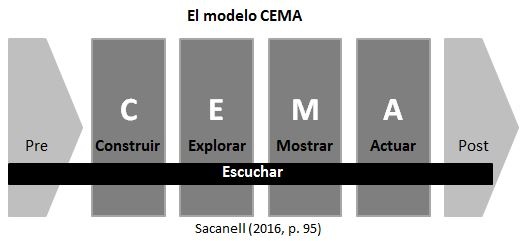Table of contents
Speaking with employees is key to avoiding conflicts
Managing difficult conversations with employees is an inevitable part of human resources management in any company. Common examples of issues at work are discussions on poor employee performance, failure to meet working hours, or conflicts between colleagues. It is a reality that these situations create tension and stress for all employees. And usually the necessary conversations to lessen tensions and resolve issues are delayed. In many cases, it’s because we don’t know how to begin the conversation, or we don’t know how to choose the most appropriate words to create an open dialogue. But failing to address difficult conversations with employees at the right moment is not recommended at all, because a small issue can become a difficult problem to resolve, and can end up affecting the productivity of those involved and creating a negative working environment.When there is a problem in an organization or team,
it’s usually due to lack of communication.
The 6 stages of a conversation
In his Spanish book “How do I say it? The art of difficult conversations. Impulsing effective change through dialogue” (Barcelona, Libros de cabecera, 2016), Enrique Sacanell proposes the CEMA model to tackle difficult conversations. CEMA is the Spanish acronym for Build (Construir), Explore (Explorar), Show (Mostrar) and Act (Actuar). This model divides all dialogue into 6 stages, and highlights that listening is the attitude that must be present throughout the entire process.-
“Pre-conversation”
Preparation phase. The more your prepare the conversation, the greater the chance that it will be successful. Although there are no two conversations the same, and you should always leave room for improvisation. -
“Build” – Construir
The beginning is very important. The place where we approach that difficult conversation and our attitude are very important to build a trustworthy environment that encourages dialogue. -
“Explore” – Explorar
Before showing our opinion and making suggestions, it’s essential to leave space for the other to express his/her vision. -
“Show” – Mostrar
This is the moment to show our vision as clearly and accurately as possible. -
“Act” – Actuar
>> Related post: What is the employee experience?
7 tips to address difficult conversations with employees
Any person that is responsible for a team needs to have conversation techniques to handle any conflicting topic. These 7 tips are very useful to ensure that difficult conversations won’t be traumatic for anyone:1. Prepare the meeting
Whether it’s talking directly with an employee or being a mediator in a conflict, it’s important to decide in advance what the purpose of the conversation is .
For that, it’s important to have all of the necessary information before beginning to talk. The goal is to base your message on data or specific facts, not on assumptions.
To do this, you have to ask and ask questions. An active listener can obtain statements from the participant: What goals or responsibilities are the employee not complying with? In a conflict between colleagues, what is the other side of the story?Before beginning the conversation, it’s important to know if a personal issue might be the source of the problem.
“Every conversation is an unrepeatable and unpredictable universe. Navigating each one of those is an art.”
Enrique Sacanell
2. Free yourself from prejudices
In many situations we probably have preconceived ideas about what might have happened, created by rumors that circulate in the office or due to our greater or lesser affinity for the employee we have to talk with.. These previous ideas predispose us to adopt a certain attitude, and to make value judgements that can ruin the subsequent conversation. Everyone should have the opportunity to express his/her point of view, and let it be heard openly without predefined filters. Your reaction and response to what the employee has to say should be as thoughtful and fair as possible.
3. Watch your attitude and language
How can you begin a conversation? “I would like to talk about … with you, but first I would like to know what is your point of view with respect to …” would be a good example of how to start a dialogue. Nobody likes hearing bad news, let alone about yourself. The form – verbal and nonverbal communication – matters a lot at the moment of beginning a complicated conversation. However, it’s important to be clear and not leave margin for interpretation. If you start a conversation abruptly, it’s likely that the other person will feel attacked and adopt a defensive attitude. If you want the employee to be receptive, open to constructive criticism and to leave the meeting predisposed to improve, you should take care of these details.4. Constructive criticism
Whatever the reason for the meeting, it’s important that your criticism is always constructive. That means it should be based on an objective observation and accompanied with a solution to the problem. Constructive criticism does not generalize, it’s specific and projected in the future. For example, helping the employee to find out why he isn’t meeting his goals, and suggest what he could do to change that. Remember that many employees hope for their boss to also be a coach that guides them, and helps them reach their goals and progress in their profession. 5. Control your emotions A relaxed conversation usually becomes an argument when the emotional part takes over and blocks our rational side. The same mechanism is activated when we are having a difficult conversation: when it begins to get out of control, our emotions step in and we raise our voices. Our emotional side interprets that the rational side is not capable of controlling the situation, and has to choose between two solutions: flee or attack. When this happens, you should question the other party. You will be forcing him/her to think of a response. In this way, the rational side will take over the emotional (in most cases).Robert Plutchik, former professor at the Albert Einstein College of Medicine, created an Emotional Wheel to show that emotions follow a path. What begins with an annoyance can become anger and, in extreme cases, escalate into hate.







